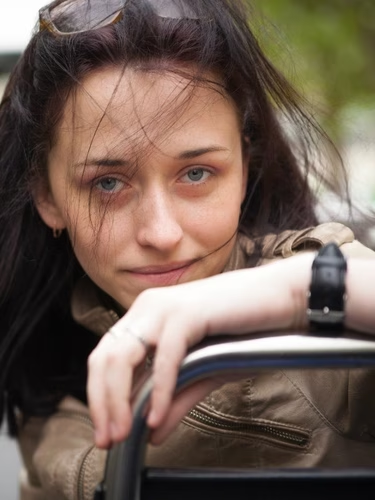🌌 Northern lights after work: night photography without disruptions
🎯 Who is it for and what is the goal
For those who work during the day and go out in the evening to chase the aurora — without night marathons and ruined mornings. Below is the working mode, principles for choosing quick spots 20–40 minutes from the city (Tromsø/Alta/Lofoten), minimum equipment and winter road rules.
⏰ ‘Work during the day — aurora at night’ mode
🕐 Window and return
- Observation window: guideline 21:00–02:00.
- Short nap: 30–40 minutes around 19:00.
- Return: plan to finish by 02:30 to maintain your morning rhythm.
⚡ Energy and the next day
- Caffeine — until 18:00, then only warm tea.
- Set a meeting without a video camera/a ‘quiet’ focus slot for the morning.
- If you had a ‘night’ outing, move difficult tasks to the afternoon window.
📍 Quick locations 20–40 minutes from the city (overview)
🌑 Selection criteria (Tromsø/Alta/Lofoten)
- Dark sky: away from streetlights and water reflections in the harbour.
- Safe parking: only official parking spaces/car parks, not on the roadside.
- Clear horizon to the north/northeast.
- Plan B nearby: an alternative spot within ±10 minutes by car.
Typical locations: small beaches/piers in bays, panoramic pockets on the road along the fjord, bridges with sidewalks and railings (for tripods). Don't stray too far from the city: in bad weather, it's best to make short trips between 2–3 nearby locations.
☁️ Forecasts and cloud cover
How to read the ‘weather for the aurora’
- Clouds are more important than the index. When there is low cloud cover and gaps, weak activity is also visible.
- Check the hourly cloud cover, wind and visibility; compare two sources.
- Indices/alerts are a guide, not a guarantee: catch the ‘windows’ between clouds and keep a spare shore nearby.
🗺️ Mini-algorithm
- High/low cloud maps.
- Wind near the coastline (gusts).
- Precipitation and visibility ±3 hours from departure.
- Decide whether to go or not 60–90 minutes before departure.
🎒 Night photographer's go-bag
📸 Minimum equipment
- Tripod (stable, with a hook for weighting).
- Headlamp with red light + reflectors/vest.
- Liner gloves for warm mittens; hand warmers/batteries.
- Power bank, spare batteries (keep warm), microfibre for lenses.
- Thermos + quick snack, offline maps.
- Shoes with microspikes/grips for icy conditions.
⚙️ Camera start-up settings (cheat sheet)
- 14–24 mm lens, f/2–f/2.8.
- ISO 800–3200, shutter speed 2–10 s (the more active the aurora, the shorter the shutter speed).
- Manual focus on a star (via Live View, 10× magnification).
- White balance 3500–4000 K (as a starting point).
- Timer 2 s or remote control, stabilisation on a tripod — off.
🚗 Roads and safety
🛣️ On the route
- Only legal parking spaces/pockets. Do not park your car with the front facing the road.
- Ice/snow: take small steps, use crampons, a torch/vest.
- Do not approach the water's edge during surf/strong winds.
- Share your departure plan with someone in town; keep your phone charged and warm.
🔦 At the location
- Do not shine white light in other people's eyes; use red light for adjustments.
- Keep an eye on your tripod in windy conditions; weigh it down with your backpack.
- Do not enter private property or block driveways/gates.
🏃♂️ Quick route ‘after work’
- 18:30 — light dinner, thermos, 30–40 minutes of sleep.
- 20:30 — check cloud cover/wind, select 2 nearby locations + 1 backup.
- 21:00 — departure; first — ‘against the wind’, return — ‘with the wind’.
- 23:30–01:30 — shooting in series, short trips between points.
- ≤02:30 — home, warm shower, ‘soft start’ alarm clock.
✅ Aurora Nomad Checklist
- Tripod, headlamp (red mode), reflectors/vest
- Gloves, hand warmers, spare batteries in a warm pocket
- Membrane, warm hat/buff, waterproof shoes with spikes
- Thermos, snacks, offline maps, plan A/B
- Parking only in pockets, not at the edge of the road
❓ FAQ
Pick locations within 20–40 minutes from town: small beaches, piers, roadside viewpoints, or bridges with safe sidewalks. Stay close to Tromsø/Alta/Lofoten — short “hops” between 2–3 nearby points are safer and save energy. Always park only in official bays.
Take a 30–40 min nap around 19:00, head out by 21:00, and plan to return by 02:30. After aurora trips, schedule “quiet slots” or camera-off meetings in the morning and shift heavy tasks to the afternoon. Avoid caffeine after 18:00 — stick to tea.
Go-bag essentials: tripod, headlamp with red mode, reflectors/vest, warm hat and buff, merino + membrane, thin liners under mittens, chemical hand warmers, dry socks. Don’t forget spikes for shoes, a thermos with tea, snacks, and offline maps.
Clouds matter more than KP index. Check high/low cloud maps, wind, and visibility hour by hour. Compare at least 2 sources and decide 60–90 min before departure. Even weak aurora shows through breaks in cloud — keep a backup spot 10 min away. Treat forecasts as a guide, not a promise.





1 comment
Log in to leave a comment